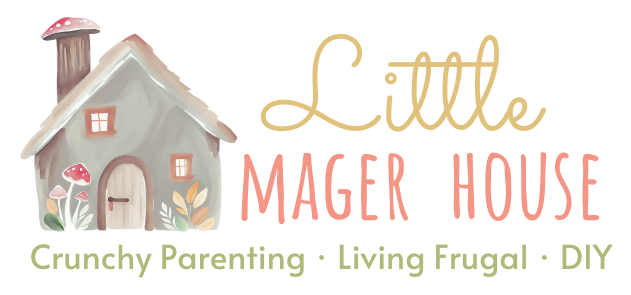Today’s fast-paced world makes finding effective and engaging methods of teaching difficult for parents and educators. Traditional approaches may work, but may not capture their imagination the same way. Parents and educators need to adopt diverse approaches that stimulate curiosity while creating an appreciation of learning. Be it hands-on activities, technology, or imaginative play, the opportunities are limitless. In this post, we will look at some creative ways children can learn while having fun.
*This is a sponsored post. This post may contain affiliate links. That just means if you click through one of my links and purchase something, I make a small commission at no extra cost to you. As an Amazon associate, I earn from qualifying purchases. See my disclosure policy
Learning Vicariously
An innovative form of education involves vicarious experiences, wherein children gain knowledge by observing others rather than by direct participation themselves. This can happen through various mediums, including watching educational videos or attending performances, listening to stories told by family or mentors, and more. By witnessing other children face challenges, make decisions for themselves, and explore new concepts, children gain critical thinking and empathy skills that deepen their understanding of the world around them. Integrating real-life examples and role models can inspire children to pursue their interests while reinforcing lessons learned. Learning vicariously can help children to retain knowledge without even realizing it.
Hands-On Activities
Hands-on activities provide children with a fun and interactive way to explore new concepts, making learning tangible and memorable. These activities range from crafts to more intricate science experiments, giving children an opportunity to manipulate materials and explore ideas through direct experience. Cooking can provide children with lessons in measurements, chemistry, and healthy eating habits. Gardening offers lessons in biology, responsibility, and patience. Building projects, like creating a birdhouse from recycled materials or designing models from them, are great ways to develop fine motor skills and promote creativity in children. Hands-on activities encourage them to explore learning through all five senses while giving them ownership over their learning journey.
Interactive Technology
Digital tools designed to encourage engagement and interaction have revolutionized how children learn. From educational apps and online games to virtual reality experiences, these technologies create engaging environments in which children can explore concepts at their own pace. Interactive platforms provide instantaneous feedback so learners can adjust and perfect their skills immediately. Coding games can teach problem-solving and logical thinking skills, while simulation-based learning tools provide children with a more in-depth understanding of subjects like science and history through realistic scenarios. By merging learning with technology, children not only acquire digital literacy but also curiosity and motivation to advance their educational journeys.
Educational Podcasts and Audiobooks
Audiobooks and educational podcasts have quickly become powerful tools for learning, providing children with a convenient means of taking in knowledge. Audio formats offer a vast selection of topics, ranging from history and science to storytelling and language learning, that meet diverse interests and learning styles. Podcasts promote critical thinking and active listening while audiobooks enrich comprehension and vocabulary development through exposure to rich language structures and narratives. As opposed to traditional reading, these audio formats allow children to engage with content while multitasking: during commutes, workouts, or just quiet time at home. By adding educational audio resources into their routines, children can broaden their horizons, stimulate their imaginations, and foster an eagerness for lifelong learning.
Outdoor Learning
Outdoor learning offers children a special environment where they can connect with nature while experiencing hands-on lessons that foster experiential learning principles. This approach also supports physical activity, creativity, and social interdependence qualities, which promote child development in its totality. Activities focused on nature such as gardening, wildlife observation, and nature walks provide children with an opportunity to gain an appreciation of ecosystems while building an understanding of them. Outdoor learning fosters curiosity and problem-solving abilities as children encounter real-life challenges together and develop the necessary collaborative skills to overcome them. Engaging with nature can reduce stress and enhance overall well-being, providing a holistic educational experience beyond classroom walls. Integrating outdoor learning into their curriculum framework, educators can instill an appreciation of both their immediate surroundings as well as of all living things connected through nature.
Storytelling and Role-Playing
Storytelling or role-playing activities are creative ways children can learn while strengthening communication. From creating their own tales to acting out their favorite book, storytelling activities cultivate thinking critically and emotional expression while strengthening social skills and teamwork when working collaboratively to craft narratives.
Integrating Math Into Everyday Life
Math doesn’t need to be limited to classroom settings. Find ways to incorporate mathematical skills into everyday tasks, like cooking or grocery shopping. Measure ingredients or budget for an outing with family can transform mundane activities into learning opportunities. Games like “store” and “bank” provide financial literacy education in an engaging, fun manner.
Art and Creativity
Creativity can be an invaluable resource in learning for children. Art projects allow them to explore self-expression while developing fine motor skills, color theory, and spatial awareness concepts. Encouraging your child to experiment with various mediums, painting, sculpting, or digital art, will allow them to appreciate creativity’s beauty while learning historical contexts of art history.
Collaborative Learning
Learning doesn’t need to be a solitary pursuit, encourage your child to study in groups or teams. Group projects develop collaboration, communication and teamwork skills while peer-to-peer education strengthens concepts by teaching others about them. Peer education reinforces knowledge while building confidence among children themselves. Consider finding clubs or study groups that speak directly to your child’s interests.
Field Trips and Real-World Experiences
Plan field trips for your child that allow them to learn outside the confines of a classroom setting, like museums, farms, or historical sites in their locality. Field trips offer context for what they learn as they gain experience with real-life applications of what they have been studying in class and at home, making abstract concepts tangible knowledge.
Cultivate Curiosity Through Questions
Finally, cultivate an attitude of inquiry among your children by encouraging them to explore their interests and ask questions. Be present, engaged, and available for discussions around inquiries into learning moments such as books, videos, or dinner conversations which spark them off into deep dives on specific subjects revealing your child’s passion for discovery.

Conclusion
No one-size-fits-all approach works to help children learn effectively. By exploring various approaches ranging from physical activities to digital tools, you can craft an ideal learning environment tailored specifically for your child’s unique interests and learning styles. Remember the key goal should be inspiring curiosity and sparking wonder. By trying these creative ways children can learn, you will help your child not only flourish academically but also cultivate a lifelong love of education.

